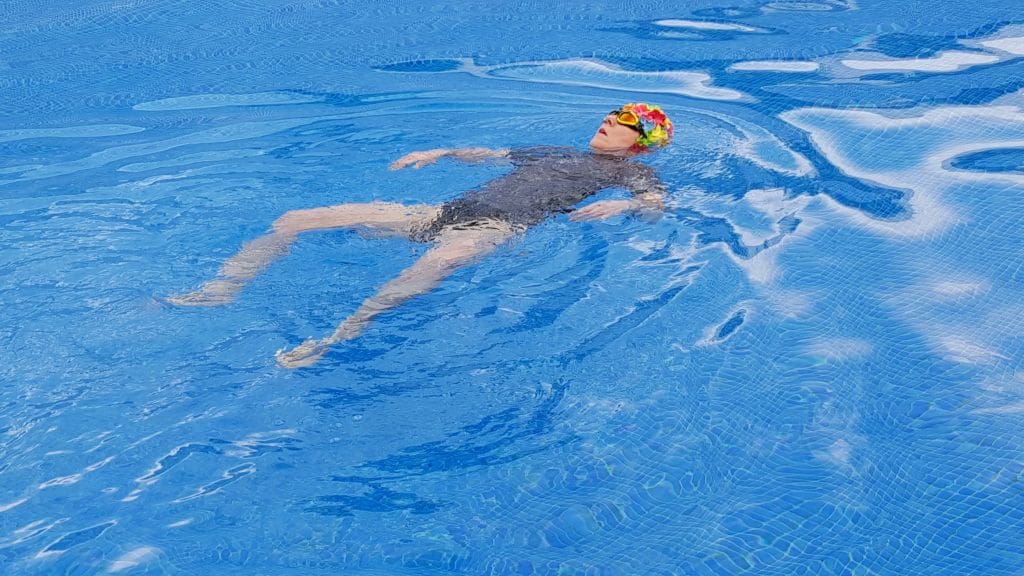The importance of learning to swim on the back is often overlooked. Being supine with the support of water is a great way to release and expand. You can breathe freely, without needing to turn or lift your head. And there are two kinds of basic movement pattern which help develop fundamental body coordination:
Movement Type 1
Cheryl and I like to swim ‘Old English Backstroke’. That’s what we call it, but the stroke we teach may not actually have a name. It gets you coordinating the top and bottom halves of your body, which most of us tend not to be very good at.
Relaxing your neck and letting your back spread out into the water, let your hips ‘give’ and sink as you open your arms and legs softly, at the same time. Keeping the hands and feet in the water, let them ‘drift’ in the direction of your head then swish them together.
‘Drift then Swish!’, Cheryl says, or ‘Open then Lengthen’.
You need to avoid pulling your arms and legs up too suddenly at the preparation or ‘recovery’ phase as this may cause your face to go under and you’ll lose your balance. So it’s a good way to learn the principle of doing as little as possible when preparing for a propulsive movement.
Another advantage of this old-fashioned stroke is that it isn’t used in competitive swimming. It’s all about relaxation and enjoyment and, when using it, you’re unlikely to get caught in the trap of competitiveness. But it’s a satisfyingly efficient way of moving through the water.
For inspiration, check out this 10 second clip of an octopus swimming. It’s exactly what we’re aiming for.
Movement Type 2
The second movement pattern is basically Back Crawl but doesn’t need to be thought of as a competitive stroke. The challenge is to work on the coordination of splitting the body into two halves, left and right.
You need to keep the legs moving alternately, ankles loose, making little splashes with the toes. With one arm resting behind the head and the other, by the side, and with the head, neck and back staying quiet, the aim is to swap the arms over. The one that’s resting by the side floats up out of the water, up to the ceiling, as the other arm sweeps back to the side, remaining underwater. Try to get them to arrive in the opposite place at the same time so you repeatedly find yourself in the starting position. Allow your body to rotate a bit to make it easier on the shoulders to get your hand in the water, but keep your head still. Enjoy a pause before changing the arms but keep the legs going.
The secret is to keep the head, neck and back quiet so that you have control of the arm which is floating up out of the water. Slow is good, but not easy at first.
Work on these coordination patterns on your back and you may find your Breaststroke and Front Crawl coming together better. If you’re finding anything difficult on your front, it’s always a good idea to turn over!


